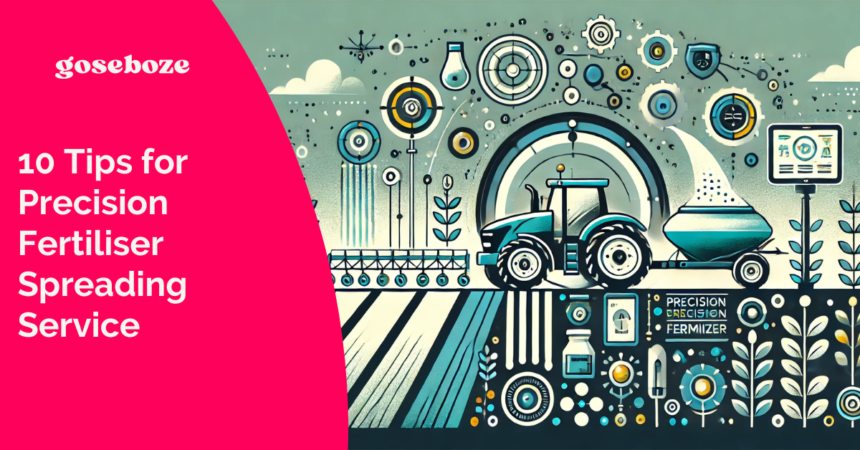Precision fertilizer spreading is important for maximizing crop yield and minimizing environmental impact. Whether you’re a farmer, agronomist, or involved in agricultural services, implementing effective strategies for fertiliser application is key. In this article, you will learn the ten tips to ensure precision and efficiency in your fertiliser spreading service.
1. Soil Testing
Start with thorough soil testing to find out the nutrient levels and pH balance of your soil. This analysis gives you the important information needed to create accurate fertilizer plans that match the specific needs of your fields.
2. Calibration of Equipment
Regularly adjust and check your fertiliser spreading equipment to make sure it applies the right amount. Follow the instructions from the manufacturer and change the settings based on the type of fertiliser, the width of the spreader, and the weather conditions.
3. Understand Fertilizer Types
Different fertilizers have varying properties and application requirements. You need to familiarize yourself with the characteristics of each type to optimize spreading efficiency and nutrient uptake by crops. This include:
- Granular fertilisers are easy to store and are often used for slow-release plant feeding.
- Liquid fertilisers can be sprayed directly into the soil by providing quick nutrient uptake.
- Organic fertilisers are designed for quick and efficient nutrient delivery.
- Slow-release fertilisers reduce the need for frequent applications and minimize the risk of nutrient leaching.
- Water-soluble fertilisers are often used in irrigation systems or as foliar sprays.
4. Consider Environmental Factors
Always remember that you need to consider the wind speed and the shape of the field when planning to spread fertilizer. Adjust how you spread the fertiliser and the settings on your equipment to make sure it covers the field evenly and doesn’t blow away.
5. Utilize GPS Technology
Lots of fertiliser spreading service use GPS-guided systems to help make fertilizer spreading more precise by creating a map of the field and applying fertilisers exactly where needed. This technology prevents overlapping, increases accuracy, and saves time during the process.
6. Maintain Proper Spreader Operation
Keeping your fertiliser spreading equipment in good shape is crucial for it to work well. In order to last a long, make sure to check the following, such as:
- Spreader vanes are clean.
- Check the spinner speed.
- Look for any wear and tear.
This helps avoid spreading the fertiliser unevenly, ensuring that all parts of your field get the right amount.
Read Also: How Much Does Taylor Swift Weigh in 2024? Explore Her Diet, Height, and Net Worth
7. Monitor Application Rates
Check the amount of fertiliser being spread while you work to make sure it’s consistent. Adjust the settings if needed. Use tools to control the flow and watch how the spreader is working to ensure the fertilizer is evenly spread across the field.
8. Timing of Application
Apply fertilisers at the right times to match the growth stages of your crops and their nutrient needs. Early in the season, applying fertiliser helps young plants grow strong. Later in the season, applying fertilizer at the right time supports the plants’ reproduction and increases their yield.
9. Record-Keeping and Analysis
Keep detailed records of your fertiliser applications and note down the types of fertilisers used and the amount you applied based on the conditions in the field. By looking at this data later, you can see what worked well and spot any patterns. This helps you make better choices for fertilising in the future.
Read Also: Ed Sheeran Details the Lovestruck Jitters in Sweet New Single …
10. Comtimouse Education and Training
To keep improving the way you spread fertilizer on crops, it’s important to keep learning about new technologies and methods. Enabling you to know the latest tools and techniques, you can attend:
- Workshops
- Webinars
- Conference
This helps you stay ahead and do better at spreading fertiliser precisely, which is good for growing healthier crops while protecting the environment.
Maximize Crop Yield with Precision Fertiliser!
Following these strategies makes sure that when you spread fertiliser, you do it accurately and efficiently. This means you use just the right amount needed for the crops, which is good for the environment. It also helps your crops grow better and produce more. By using the best techniques and keeping up with what’s new in farming, you can make sure your methods are sustainable and lead to higher yields.








